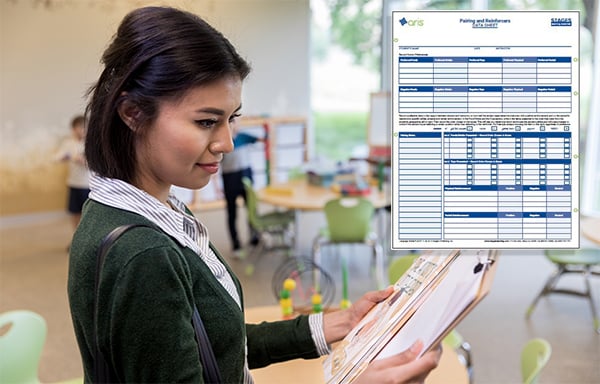Streamlining Special Education Programs: The Importance of Effective Procedures
In the intricate tapestry of special education, procedures serve as the threads that weave together the various components of a program, ensuring a seamless and effective delivery of services. These procedures, which encompass everything from IEP development and compliance to data management and communication, form the backbone of a well-functioning special education system. The "Procedures" component of the Stages Learning 5P Program Evaluation Framework recognizes the critical role that these processes play in supporting the success of students with disabilities.
By taking a closer look at the "Procedures" component, education leaders can identify areas where their current systems may be falling short and develop targeted strategies for improvement. This process of evaluation and refinement is essential for creating special education programs that are not only compliant with legal requirements but also responsive to the unique needs of each student. Through the lens of the 5P Framework, we can see how effective procedures can streamline operations, foster collaboration, and ultimately lead to better outcomes for students with disabilities.
In this article, we will delve into the key elements of the "Procedures" component, exploring best practices and strategies for optimizing IEP development, ensuring compliance, protecting student data, and promoting effective communication. By prioritizing these critical processes, education leaders can build special education programs that are efficient, effective, and truly student-centered.

The 5P Framework: Putting Procedures in Perspective
The 5P Framework provides a comprehensive approach to evaluating and enhancing special education programs, with "Procedures" serving as one of the five key components. By examining factors such as IEP development, compliance with regulations, data management, and communication systems, curriculum directors and special education administrators can identify areas for improvement and develop targeted strategies to streamline their operations.
When assessing the "Procedures" component, consider the following critical elements:
- IEP Development and Implementation
- Are there clear and consistent procedures for developing and implementing IEPs?
- Do these procedures ensure that IEPs are tailored to each student's unique needs and goals?
- Are there systems in place for monitoring and adjusting IEPs based on student progress?
- Compliance and Documentation
- Are there established procedures for ensuring compliance with state and federal regulations?
- Do these procedures include clear guidelines for maintaining accurate and secure documentation?
- Are there processes for regularly reviewing and updating procedures to align with changes in laws and best practices?
- Data Management and Confidentiality
- Are there secure systems and procedures in place for managing and storing student data?
- Do these procedures include training for staff on data privacy and confidentiality protocols?
- Are there clear guidelines for sharing relevant data with appropriate stakeholders?
- Communication and Collaboration
- Are there established procedures for facilitating communication and collaboration among special education staff, general education teachers, administrators, and families?
- Do these procedures include protocols for collaborating with external service providers?
- Are there systems for soliciting and incorporating feedback from stakeholders to inform procedural improvements?
By thoroughly examining these aspects of the "Procedures" component, education leaders can identify areas where their processes and systems may need refinement, leading to more streamlined and effective special education services.
IEP Development and Implementation: Ensuring Consistency and Quality
Effective procedures for developing and implementing Individualized Education Programs (IEPs) are critical for ensuring that students with disabilities receive the targeted support and services they need to succeed. To ensure that IEP procedures are consistent and of high quality, consider the following strategies:
- Standardized Processes
- Develop clear, step-by-step procedures for each stage of the IEP process, from referral and evaluation to implementation and progress monitoring
- Ensure that all staff members are trained on these procedures and understand their roles and responsibilities
- Quality Assurance Checks
- Implement a system of quality assurance checks to ensure that IEPs are complete, compliant, and tailored to each student's unique needs
- Use checklists, rubrics, or other tools to guide the development and review of IEPs, ensuring consistency and adherence to best practices
- Progress Monitoring Procedures
- Establish clear procedures for regularly monitoring student progress toward IEP goals, including guidelines for data collection, analysis, and reporting
- Use progress monitoring data to inform decisions about adjusting IEPs, interventions, and support services
- Family Engagement Protocols
- Develop procedures for actively involving families in the IEP process, including clear communication protocols and opportunities for meaningful input and collaboration
- Provide resources and support to help families understand their rights and navigate the special education system
By focusing on consistent, high-quality IEP procedures, special education programs can ensure that every student receives the individualized support and services they need to make meaningful progress.

Compliance and Documentation: Ensuring Adherence to Legal Standards
Maintaining compliance with state and federal regulations is a critical responsibility of special education programs. Effective procedures for ensuring compliance and maintaining accurate documentation can help protect the rights of students with disabilities and avoid potential legal issues. To strengthen compliance and documentation procedures, consider the following strategies:
- Compliance Checklists and Timelines
- Develop checklists and timelines for each stage of the special education process, outlining legal requirements and deadlines
- Use these tools to guide staff members through the compliance process and ensure that all necessary steps are completed in a timely manner
- Documentation Templates and Systems
- Create standardized templates for documenting key aspects of the special education process, such as evaluations, IEPs, and progress reports
- Use secure, digital systems for storing and managing documentation, ensuring easy access for authorized staff members and protecting student privacy
- Staff Training and Support
- Provide regular training to all staff members on special education laws, regulations, and documentation requirements
- Offer ongoing support and guidance to help staff navigate complex compliance issues and maintain accurate records
- Compliance Monitoring and Review
- Implement a system for regularly monitoring and reviewing special education files and documentation to ensure compliance with legal standards
- Use this process to identify areas for improvement and provide targeted support and training to staff members as needed
By prioritizing compliance and documentation procedures, special education programs can ensure that they are meeting their legal obligations and providing appropriate services to students with disabilities.

Data Management and Confidentiality: Protecting Student Information
Effective procedures for managing student data and maintaining confidentiality are essential for protecting student privacy and ensuring that information is used appropriately to support learning and growth. To strengthen data management and confidentiality procedures, consider the following strategies:
- Data Governance Policies
- Develop clear policies and procedures for collecting, storing, accessing, and sharing student data
- Ensure that these policies align with relevant laws and regulations, such as the Family Educational Rights and Privacy Act (FERPA)
- Secure Data Systems and Practices
- Invest in secure, encrypted data management systems that restrict access to authorized users and protect against breaches or unauthorized disclosures
- Implement strict access controls and permissions, ensuring that staff members have access only to the data they need to perform their specific job duties
- Staff Training on Privacy and Security
- Provide comprehensive training to all staff members on data privacy laws, security protocols, and their responsibilities for protecting student information
- Offer ongoing support and resources to help staff maintain best practices for data management and confidentiality
- Regular Security Audits and Updates
- Conduct regular security audits of data systems and practices to identify potential vulnerabilities or areas for improvement
- Stay up-to-date on the latest data security threats and best practices, updating systems and procedures as needed to maintain a strong defense against breaches or unauthorized access
By implementing robust data management and confidentiality procedures, special education programs can protect student privacy, maintain trust with families, and ensure that data is used effectively and ethically to support student success.
Conclusion
The "Procedures" component of the 5P Framework may not be the most glamorous aspect of special education, but it is undoubtedly one of the most important. By focusing on the development and implementation of effective procedures, education leaders can create a solid foundation upon which to build truly exceptional special education programs.
From ensuring that IEPs are tailored to each student's unique needs to protecting the privacy and security of sensitive data, the procedures that govern a special education program have far-reaching implications for student success. By consistently evaluating and refining these processes, education leaders can foster a culture of continuous improvement, where every challenge becomes an opportunity for growth and every success serves as a model for future progress.
Ultimately, the goal of any special education program is to provide students with disabilities the support and services they need to thrive both academically and personally. By prioritizing the "Procedures" component of the 5P Framework, education leaders can take a significant step toward achieving this goal. Through a commitment to effective, efficient, and student-centered procedures, we can create special education programs that not only meet the letter of the law but also embody the spirit of equity and inclusion that lies at the heart of this vital field.
This article is part of a 5-part series on Stages' 5P Framework: People, Place, Practices, Procedures, and Products. The articles in this series include:

Angela Nelson, J.D., Ed.M.
Angela Nelson is the creator of the widely-recognized Language Builder Picture Card Series, and the creator and lead author for the Language Builder ARIS curriculum. Angela received her BA and JD from UCLA where she studied and practiced behavior psychology under Dr. Ivar Lovaas, and her Ed.M. at the Harvard Graduate School of Education, with a focus on technology innovation and education. As Founder and CEO of Stages Learning Materials, Angela has created autism, special needs and early childhood curriculum products since 1997. In addition to her duties at Stages, Angela writes for multiple industry publications and is Chair of the Education Market Association.






